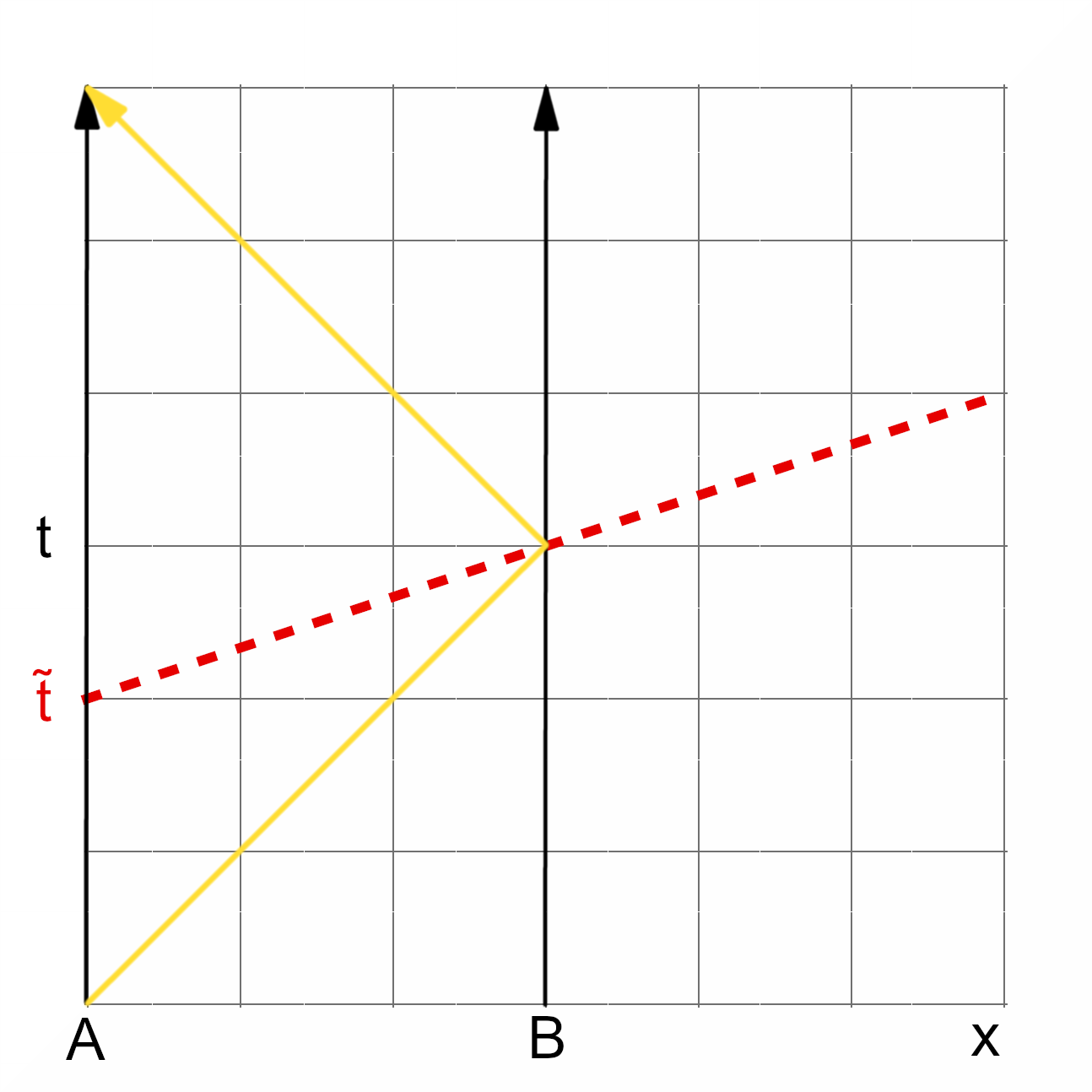In his book “The Philosophy of Space and Time” (original German version 1928) the science philosopher Hans Reichenbach articulates the idea that distant simultaneity in relativity theory is just an arbitrary convention like all coordinate definitions.
The definition of simultaneity given by Einstein, see eq. (3.1.), defines the time of arrival of the light ray at B as the mid-point between the time that the light was sent from A and the time that it returned to A. According to Reichenbach this definition is not compelling; any time will do provided it comes after and before :
